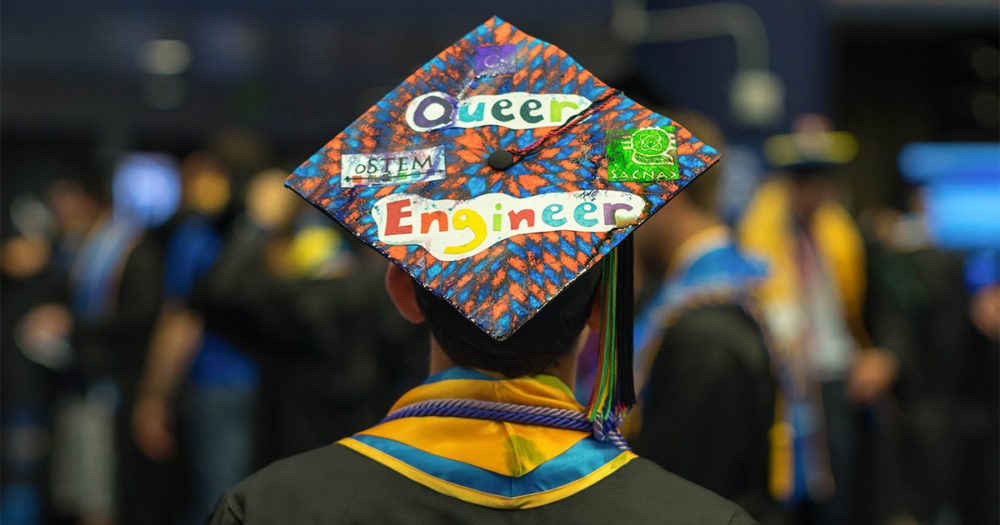This year’s pride month is coming to an end, and with it I take many valuable lessons learned. In many ways, pride 2017 was historic. In Washington, DC, protests erupted along the route of the pride parade by the group No Justice, No Pride to advocate for inclusivity of marginalized groups at pride activities. Along these same lines, Philadelphia kicked off their pride month by unveiling a rainbow flag with two new colors added, black and brown, to represent LGBQT individuals of color. Our community somberly remembered the 1-year anniversary of the deadliest mass shooting in modern U.S. history when 49 people, mostly LGBQT Latinx identified individuals, lost their lives at the Pulse nightclub in Orlando, Florida. We also were reminded that even as we trudge along behind the heels of a presidential administration that is hostile to the LGBQT community, our brothers and sisters around the world are risking their lives to even celebrate pride month.
These issues of inclusion have made me wonder, what is representation like of LGBQT individuals in science, technology, engineering, and mathematics (STEM) fields?
Data on LGBQT individuals in STEM fields is lacking
At the 2012 annual meeting of the Ecological Society of America poster session, I began to notice the increased presence of researchers investigating the representation of women and minorities in biological sciences. They had lots of data showing women and people of color are underrepresented not only in biology but STEM overall, even data showing which science-based fields these minorities were most underrepresented in, and they were beginning to ask the question of “why are these groups underrepresented in STEM fields?” While we must do more work to answer this question and address these disparities, I found myself standing among these many posters thinking, “where are the data on LGBQT individuals in STEM fields?” “Am I, as a gay man, underrepresented in STEM?” I would find that the data didn’t exist.
While the National Science Foundation (NSF) compiles detailed statistics about women, underrepresented minorities, and the prevalence of various disabilities among US researchers and STEM students, it does not ask about LGBQT identification. Nor are there large-scale systematic independent studies that address the representation of LGBQT individuals in the STEM workforce, or question what the social environment is like in STEM places of work for these individuals.
Yet, in the STEM workforce, we know that many LGBQT scientists still fear coming out to their colleagues. This is likely because publishing, receiving tenure, and getting grant funding all heavily depend on the judgment of colleagues, who might be influenced by their own explicit or implicit biases. We know that studies conducted over the past few years suggest such biases play a role in women and people of color receiving STEM awards and grants—there is no reason to think that our community would be exempt from these same biases.
The American Physics Society also produced a 2016 report showing that 1 in 3 LGBQT physicists considered leaving their department or workplace in the last year, which correlated strongly with both personally experiencing harassment or witnessing it. And it’s possible that such issues, in addition to dealing with the hardships of identifying as LGBQT, keep LGBQT students from entering the STEM workforce, but we don’t have the data to know this. Without these data, we don’t know if LGBQT students are not entering STEM fields or being retained in them, if enough support and counseling for LGBQT scientists is being offered, or even if LGBQT individuals are equally represented in the STEM fields as compared to the overall workforce.
Yes, it gets better, but we still have work to do
The first of its kind, a study published in 2015 in the Journal of Homosexuality suggests that LGBQT scientists feel more accepted in their fields as compared to their peers in other professions. That is great news since we know that when individuals are allowed to express their identities openly they are happier, healthier, and more productive workers, and can serve as role models to the next generation of young scientists. Still, over 40% of those LGBQT STEM workers surveyed were not out to all of their colleagues.
In the US, it is still perfectly legal to discriminate against someone based on their sexual orientation in 31 states. While universities generally have policies in place that include protections for sexual orientation, there have been claims from individuals that their academic tenure was denied because of their LGBQT identity, especially in states lacking non-discrimination laws (see here, here, and here). We’ve still got protections to fight for—the fight didn’t stop at marriage equality, and it especially doesn’t stop under the current administration.
Let’s continue to remember LGBQT scientists
Our community has been represented well by amazing LGBQT scientists in STEM historically. James B. Pollack was an American astrophysicist and senior space research analyst at the NASA Ames Research Center whose work led to many advances in our understanding of the solar system. Lynn Conway, a transgender woman, was renowned for her pioneering work in microelectronic chip design. And Alan Turing, the British mathematician known as the father of modern computer science, not only made computers possible for us, but also deciphered secret German military code, contributing enormously to the Allied victory in World War II. We shouldn’t just celebrate these amazing LGBQT scientists in June, we should pride ourselves on the significant contributions our community has made to science all year long!
There could be an LGBQT individual right now who could solve the issue of antibiotic resistance or discover the secrets of dark matter. This is why it’s important to create a STEM workforce where LGBQT scientists thrive.
Where solidarity used to be defined by what LGBQT members are not (straight), pride 2017 reminded us that definition has to broaden out. We should remember well such lessons of inclusion in the STEM community.

